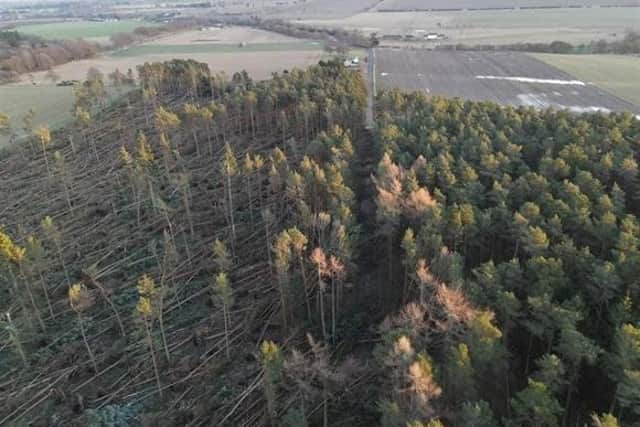First meeting of new joint group to plan recovery of felled trees


Satellite data has shown that the storm hit the wider region badly, right down the coastline and into the Angus Glens and Perthshire.
Work is being undertaken to get a more accurate picture of the volume of timber that might have been blown down.
Advertisement
Hide AdAdvertisement
Hide AdThe first meeting of the group met was held recently and included representatives from Scottish Forestry, Confor and its new Processor Group, Forestry and Land Scotland, private forest owners, timber transport companies and Aberdeenshire Council.
Speaking after the meeting, Doug Howieson, Scottish Forestry’s Head of Operational Delivery, said: “By working together, the forestry sector can make better plans on managing all the extra wood that is now needing to be recovered after the storm.
“What is clear is that there’s a significant amount of pine amongst the windblow. Pine degrades quicker than other tree species and can suffer from ‘blue-stain’ if left for too long. This staining does not affect timber properties, however, the race is on to recover the pine before the summer and get it to timber processors quickly.”
The meeting highlighted the need for better information on species and tree size and also the amount of trees that had snapped. The Forest Research agency will work on this information before the next group meeting.
Advertisement
Hide AdAdvertisement
Hide AdThe discussion also covered the importance of the agreed routes map for timber haulage. By co-ordinating timber haulage, the sector aims to reduce the impact on local communities.
Forestry and Land Scotland and the timber processors are looking to create capacity for windblown timber by substituting some planned felling and making machinery available, while meeting existing commitments and markets.
This will be a challenge and Scottish Forestry is advising woodland owners not to rush to harvest until they have a market agreed for their timber. The forest industries group will look to help this process in the coming weeks.